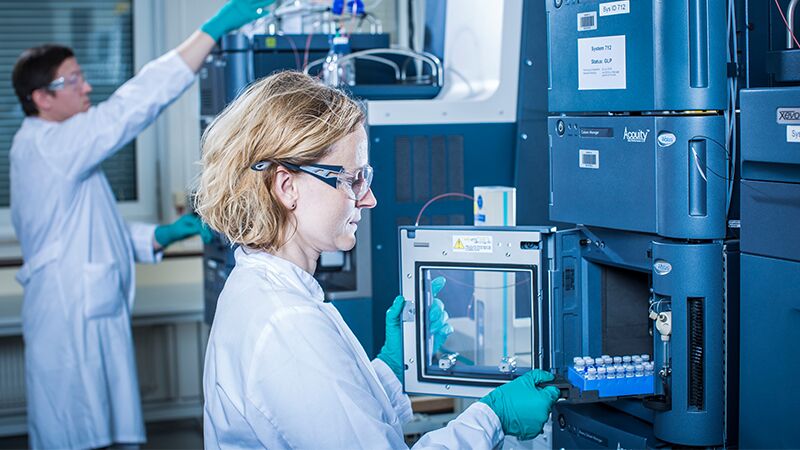In Vitro Cross-Species Metabolism
The incubation of drug candidates with liver microsomes and/or hepatocyte suspensions from human and animal species aims to identify and quantify hepatic metabolites to enable or confirm the selection of species for toxicological studies. Structure elucidation of metabolites is supported by orthogonal parameters e.g., accurate mass and MSN experiments. Our cross-species metabolism assay is generally conducted with radiolabeled test compounds in which parent drug and metabolites are quantified by radioactive measurement applying off-line scintillation counting. The use of unlabeled test compounds is feasible but allows only semi-quantitative assessments based on mass spectrometric responses. The assay can be supplemented by the determination of covalent binding of radiolabeled test compounds to hepatocyte or microsomal proteins to obtain indications for the formation of reactive metabolites and to assess potential risks for idiosyncratic toxicity caused by the drug candidate.
In Vivo Metabolite Profiling And Structure Elucidation
This solution is available in virtually all matrices collected from preclinical species in pharmacokinetic and toxicokinetic studies as well as from humans in clinical trials, including human mass balance (hADME). We highly recommend investing in the identification of circulating human metabolites already within the first-in-human (FiH) trial. Quantitation of metabolites can be accomplished by either using reference standards (if available) or radiolabeled calibration samples generated with relevant in vitro test systems (e.g., hepatocytes) and applying high resolution mass spectrometry (HR-MS) combined with off-line radio detection. The evaluation whether or not human metabolites are formed at sufficient levels by the toxicity species can be performed by analyzing matrix-matched plasma samples, even without requiring reference standards. The resulting relative metabolite exposures (human vs. preclinical species) will support the safety assessment of your drug candidate and guide further development.
